Ultimate Guide to Growing Cannabis in a DWC System (Deep Water Culture): Tips, Setup, and Best Practices
Deep Water Culture (DWC) is a popular hydroponic method for growing cannabis. It involves suspending the plant roots in a nutrient-rich, oxygenated water solution, which can lead to faster growth and higher yields compared to traditional soil growing methods. This comprehensive guide will walk you through everything you need to know about growing cannabis in a DWC system, from setting up your system to harvesting your plants.
What is DWC (Deep Water Culture)?
Deep Water Culture is a type of hydroponic system where plants are grown with their roots submerged in an oxygenated nutrient solution. The constant supply of oxygen, water, and nutrients directly to the roots promotes rapid growth and vigorous plant health. Unlike soil-based growing, DWC allows the plant roots to take up nutrients more efficiently, leading to faster growth and potentially higher yields.
How Does DWC Compare to Soil Growing?
- Faster Growth: The direct access to oxygen and nutrients accelerates plant growth.
- Achieving Higher Yields: Optimized nutrient uptake can result in larger and more potent buds.
- Reduced Risk of Pests and Diseases: The absence of soil minimizes the risk of soil-borne pests and diseases.
- Enhanced Control Over Nutrient Delivery: Precise control over nutrient levels can lead to healthier plants and higher quality yields.
DWC System Setup Step-by-Step Guide
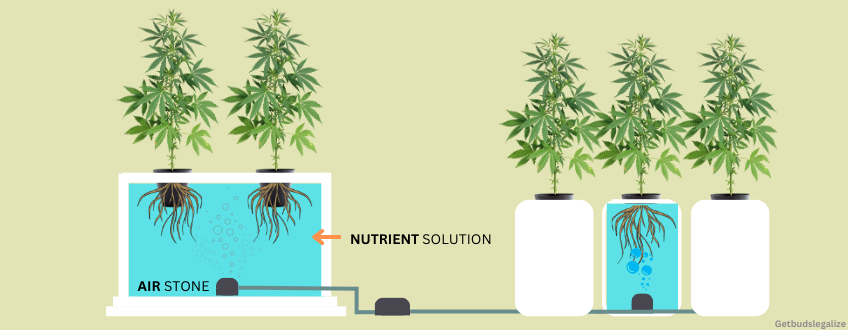
To successfully set up a Deep Water Culture (DWC) system for growing cannabis, you’ll need to assemble several essential components and follow a step-by-step process. Here’s a detailed guide to help you begin.
Essential Components for a Deep Water Culture (DWC) System
To set up a DWC system, you will need the following components:
- Reservoir: A container used to store the nutrient solution. The size of the reservoir should be based on the number of plants you intend to grow.
- Net Pots: Small pots with slits or holes to hold the plants. These allow the roots to grow out and into the nutrient solution.
- Air Pump and Air Stones: These provide oxygen to the nutrient solution, preventing the roots from drowning.
- Hydroponic Nutrients: Specialized nutrient solutions designed for hydroponic systems.
- Growing Medium: Materials like clay pebbles or rock wool to support the plants in the net pots.
- pH and EC Meters: Tools to monitor the pH and electrical conductivity (EC) of the nutrient solution.
How to Assemble:
1. Choose Your Reservoir: Select a reservoir that can hold enough water for your plants. A common choice is a plastic tote or bucket. Ensure it is opaque to prevent algae growth. Monitoring the water level is crucial to ensure the roots remain submerged but not waterlogged.
2. Install Air Pump and Air Stones: Place the air stones at the bottom of the reservoir and connect them to the air pump. This will oxygenate the water.
3. Prepare Net Pots: Fill the net pots with your chosen growing medium. Place the cannabis seedlings or clones in the net pots, ensuring the roots can grow out and down.
4. Mix Nutrient Solution: Fill the reservoir with water and add the hydroponic nutrients according to the manufacturer’s instructions. Use the pH and EC meters to ensure the solution is within the ideal range (pH 5.5-6.5, EC 1.0-2.0).
5. Place Net Pots in Reservoir: Place the net pots in the holes on the lid of the reservoir. The roots should be able to reach the nutrient solution.
6. Monitor and Maintain: Regularly check the pH and EC levels, and top off the reservoir with water and nutrients as needed. Ensure the air pump is running continuously to provide oxygen.
Correlated article:
Selecting the Best Cannabis Strains for DWC
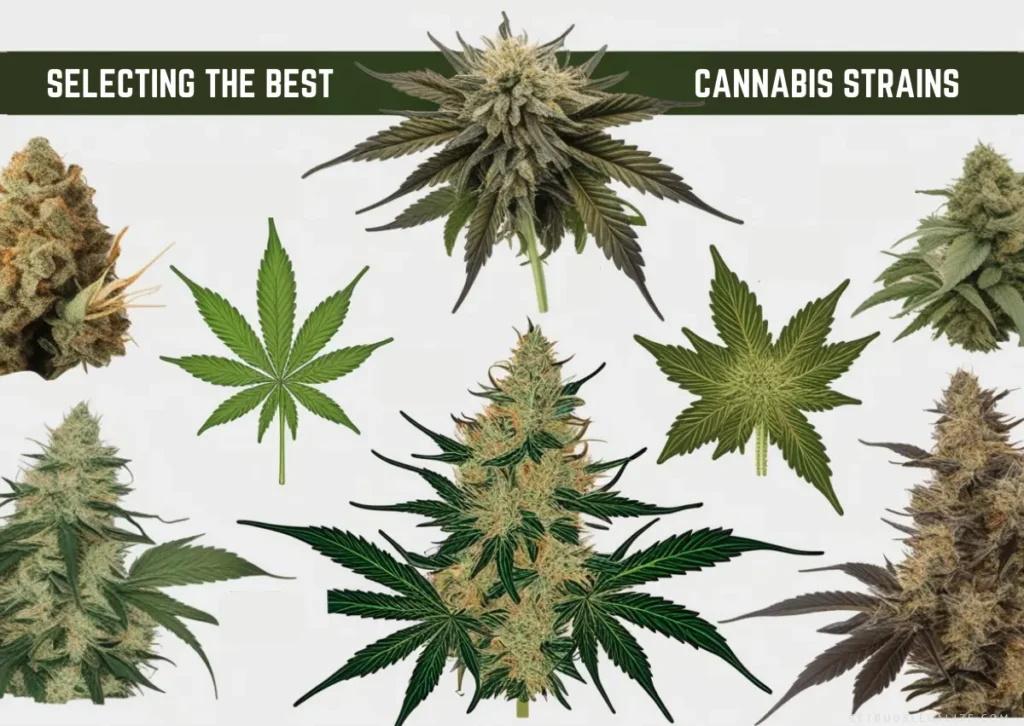
Choosing the right cannabis strain for a Deep Water Culture (DWC) system can significantly impact your grow’s success. The following factors will help guide your selection:
Factors to Consider When Choosing Cannabis Strains
1. Growth Rate:
- Importance: Fast-growing strains can help you achieve quicker harvests and manage space more efficiently in a DWC system.
- Consideration: Opt for strains known for their vigorous growth to maximize your yield and reduce the time to harvest.
2. Yield Potential:
- Importance: Different strains offer varying yields. Selecting high-yielding strains can increase the overall productivity of your grow.
- Consideration: Look for strains with a reputation for producing large quantities of buds.
3. Cannabinoid Profile:
- Importance: The desired effects of your cannabis will depend on the strain’s cannabinoid profile. THC-dominant strains provide psychoactive effects, while CBD-dominant strains offer therapeutic benefits.
- Consideration: Choose a strain based on whether you want high THC, high CBD, or a balanced cannabinoid profile.
4. Environmental Preferences:
- Importance: Some strains are better suited to hydroponic systems and specific environmental conditions.
- Consideration: Select strains that are known to perform well in DWC systems and can adapt to the controlled environment.
Top Strains for Deep Water Culture (DWC) Systems
White Widow: A Resilient Choice
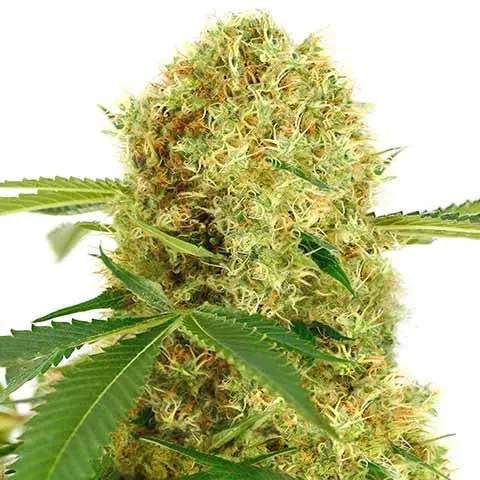
Characteristics: High yield, resilient, and easy to grow.
White Widow is a classic strain known for its powerful effects and robustness. It performs exceptionally well in a Deep Water Culture system, producing dense, resinous buds. Its resilience to pests and diseases makes it an excellent choice for both beginners and experienced growers.
Northern Lights: Hardy and High-Yielding
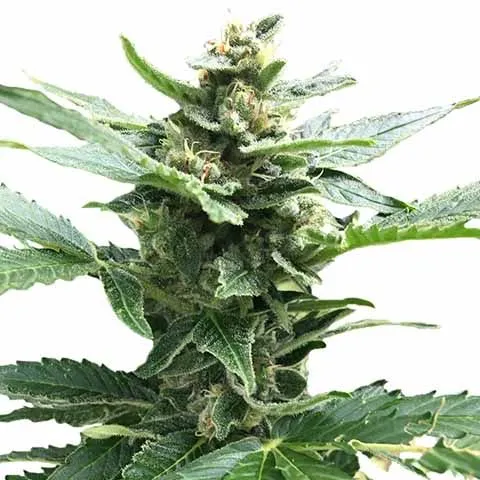
Characteristics: Hardy, thrives in hydroponic systems, and produces high yields.
Northern Lights is celebrated for its hardiness and ability to flourish in various conditions, including hydroponic setups like DWC. This strain is known for its fast flowering time and abundant yields of potent, aromatic buds, making it a favorite among hydroponic growers.
Blue Dream: Balanced and Productive
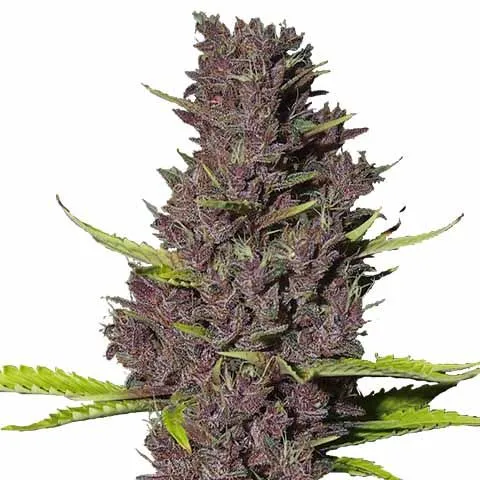
Characteristics: Balanced hybrid, high yield, and potent effects.
Blue Dream is a versatile strain that offers the best of both Sativa and Indica worlds. It is known for its high yield and potent, well-balanced effects. Blue Dream’s adaptability and vigorous growth make it a top choice for Deep Water Culture (DWC) systems, ensuring a plentiful harvest of flavorful, frosty buds.
Green Crack: Fast-Growing and Potent
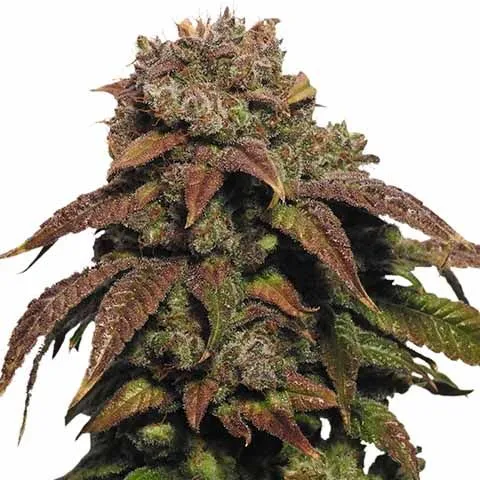
Characteristics: Fast-growing, high yields, and energizing effects.
Green Crack is a Sativa-dominant strain famous for its rapid growth and substantial yields. It thrives in hydroponic environments, including Deep Water Culture systems, where it can quickly develop into a robust plant with high-energy effects. Green Crack is perfect for growers looking for a productive and stimulating strain.
Managing Nutrients in a Deep Water Culture System
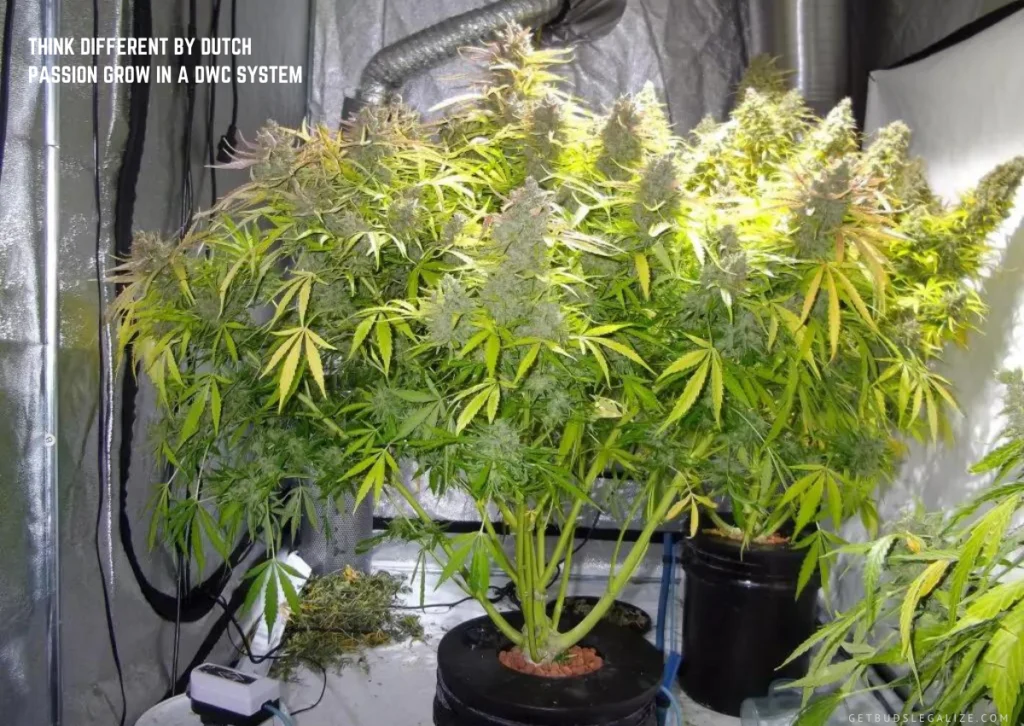
Proper nutrient management is critical for achieving healthy and productive cannabis plants in a Deep Water Culture (DWC) system. Here’s a comprehensive guide on understanding nutrient requirements, preparing the perfect nutrient solution, and troubleshooting common nutrient issues.
Understanding Nutrient Requirements for Cannabis
Cannabis plants require a balanced supply of macronutrients and micronutrients to thrive:
Macronutrients:
- Nitrogen (N): Essential for vegetative growth and overall plant development.
- Phosphorus (P): Phosphorus (P): Key for root development, flowering, and energy transfer.
- Potassium (K): Supports overall plant health, including disease resistance and water regulation.
Micronutrients:
- Calcium (Ca): Important for cell wall structure and root development.
- Magnesium (Mg): Vital for photosynthesis and enzyme activation.
- Iron (Fe): Necessary for chlorophyll production and overall plant metabolism.
Preparing the Perfect Nutrient Solution
Achieving optimal plant growth in a Deep Water Culture (DWC) system hinges on the precise preparation of your nutrient solution. The right balance of water quality, nutrient concentration, and pH and EC levels ensures that your plants receive the essential elements they need for vigorous development and robust health.
- Water Quality: Start with filtered or distilled water to avoid contaminants that could disrupt plant health and growth. This step is crucial for preventing issues that can arise from impurities in tap water.
- Mixing Nutrients: Carefully follow the manufacturer’s instructions when mixing your nutrients. Begin with a lower concentration to prevent overfeeding, and gradually increase the concentration as your plants mature. This approach helps avoid nutrient burn and supports healthy growth.
- pH and EC Levels: Monitoring and adjusting pH and Electrical Conductivity (EC) levels are vital for nutrient absorption. Maintain a pH range between 5.5 and 6.5, and keep the EC levels within 1.0 to 2.0. Regularly check these parameters and make adjustments using pH up/down solutions and by adding more nutrients or water as needed to ensure your plants receive optimal nourishment.
Troubleshooting Common Nutrient Issues
Proper nutrient management is essential for the health of your cannabis plants in a Deep Water Culture (DWC) system. However, nutrient-related problems can still arise. Here’s how to address two common issues:
- Nutrient Burn: This occurs when plants receive too many nutrients, leading to an excess that can damage them. Symptoms include yellowing and browning of the edges of leaves. To correct nutrient burn, reduce the concentration of nutrients in your solution and flush the system with clean water to remove excess nutrients. This will help alleviate stress on the plants and promote recovery.
- Nutrient Deficiency: Insufficient nutrients can lead to various deficiencies, each with its own set of symptoms. For example, yellowing leaves often indicate a nitrogen deficiency, while purple stems may suggest a phosphorus shortage. To resolve nutrient deficiencies, adjust your nutrient mix according to the specific needs of your plants. Ensure you’re providing a balanced solution with all essential nutrients at appropriate levels to address and rectify any deficiencies.
Maintaining Optimal Growing Conditions
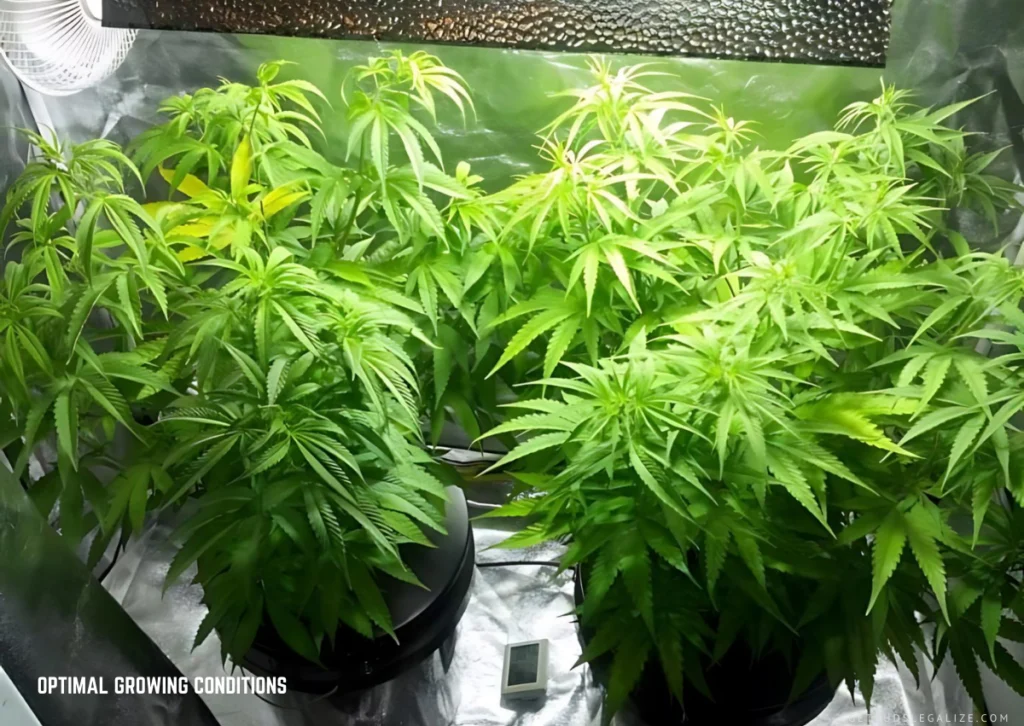
To achieve a thriving Deep Water Culture (DWC) system, maintaining optimal growing conditions is essential. This includes controlling temperature and humidity, managing lighting, and ensuring proper air circulation.
Temperature and Humidity Control:
- Temperature: Keeping the water temperature between 65-75°F (18-24°C) is crucial for preventing root rot and enhancing nutrient uptake. If needed, use a water chiller to maintain this range and ensure healthy root development.
- Humidity: During the vegetative stage, maintain humidity levels between 40-60% to support robust plant growth. In the flowering stage, reduce humidity to 40-50% to prevent mold and mildew. Proper humidity control is essential for preventing fungal issues and ensuring optimal plant health.
Lighting Requirements for Different Growth Stages:
- Vegetative Stage: Employ high-intensity discharge (HID) or LED grow lights and set the light cycle to 18 hours on and 6 hours off. This light schedule promotes vigorous vegetative growth and strong, healthy plants.
- Flowering Stage: Transition to a 12 hours on and 12 hours off light cycle to trigger and sustain flowering. Ensure that the lights are of sufficient intensity to support bud development and maximize yield during this critical phase.
Ensuring Proper Air Circulation:
Effective air circulation helps prevent mold and pests. Use oscillating fans to ensure consistent airflow around your plants and maintain a well-oxygenated nutrient solution. Additionally, ensure your air pump provides continuous oxygenation to support healthy root growth and overall plant vitality.
Training and Pruning Cannabis Plants in DWC
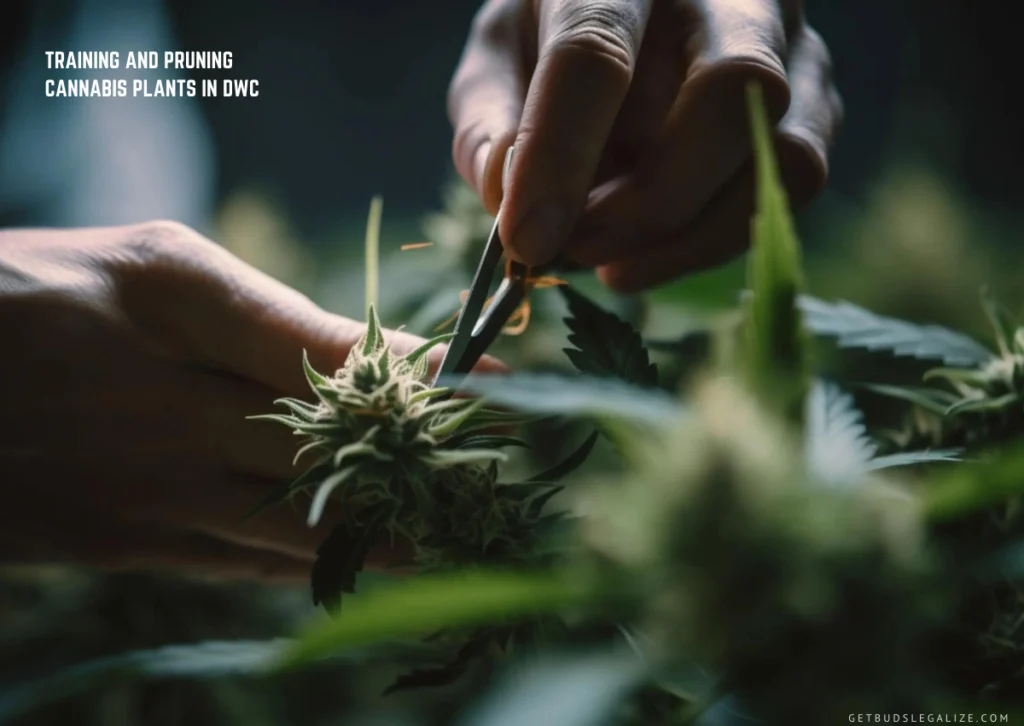
Proper training and pruning are essential for maximizing the yield and health of cannabis plants grown in a Deep Water Culture (DWC) system. These techniques help shape the plant for better light exposure and resource allocation.
Low-Stress Training (LST) Techniques:
Low-stress training (LST) is a technique used to shape a plant’s growth with minimal stress. It involves gently bending and securing branches to achieve a more uniform canopy. The primary goals of LST are to:
- Increase Light Penetration: By spreading out the branches, more light reaches the lower parts of the plant, leading to more uniform bud development.
- Enhance Yield: A more even canopy allows for more bud sites to develop and mature, potentially increasing overall yield.
To perform LST, gently bend the branches down and secure them with ties or stakes. Ensure that you don’t snap or damage the branches, and adjust the ties as the plant grows.
Effective Pruning for Enhanced Yields:
Pruning is crucial for directing the plant’s energy toward the most productive parts. Effective pruning techniques include:
- Removing Lower Leaves and Small Branches: Trim away leaves and branches that receive minimal light. This helps concentrate the plant’s energy on the main bud sites, which can lead to larger and more potent buds.
- Eliminating Dead or Diseased Foliage: Regularly inspect the plant for dead or diseased leaves and remove them promptly. This not only improves airflow and reduces the risk of disease but also ensures that the plant’s energy is used efficiently.
Managing Pests and Diseases in a Deep Water Culture (DWC) System
Maintaining a healthy Deep Water Culture (DWC) system involves vigilance against pests and diseases. Addressing issues promptly and effectively helps ensure robust plant growth and optimal yields. Here’s how to manage common pests in your DWC system:
Common Pests and Their Control Methods
Spider Mites

Spider mites are minuscule pests that can cause considerable damage by feeding on plant sap and producing webs. Though hard to spot, they are detectable by the fine webbing and specks they leave on leaves.
Control Methods:
- Insecticidal Soap: Spray the plants thoroughly with insecticidal soap, paying close attention to the undersides of leaves where mites often reside. Repeat applications may be necessary to manage the infestation effectively.
- Neem Oil: Use neem oil as a foliar spray to disrupt the mites’ life cycle and prevent further infestations. Regular reapplications can help keep the problem in check.
Aphids
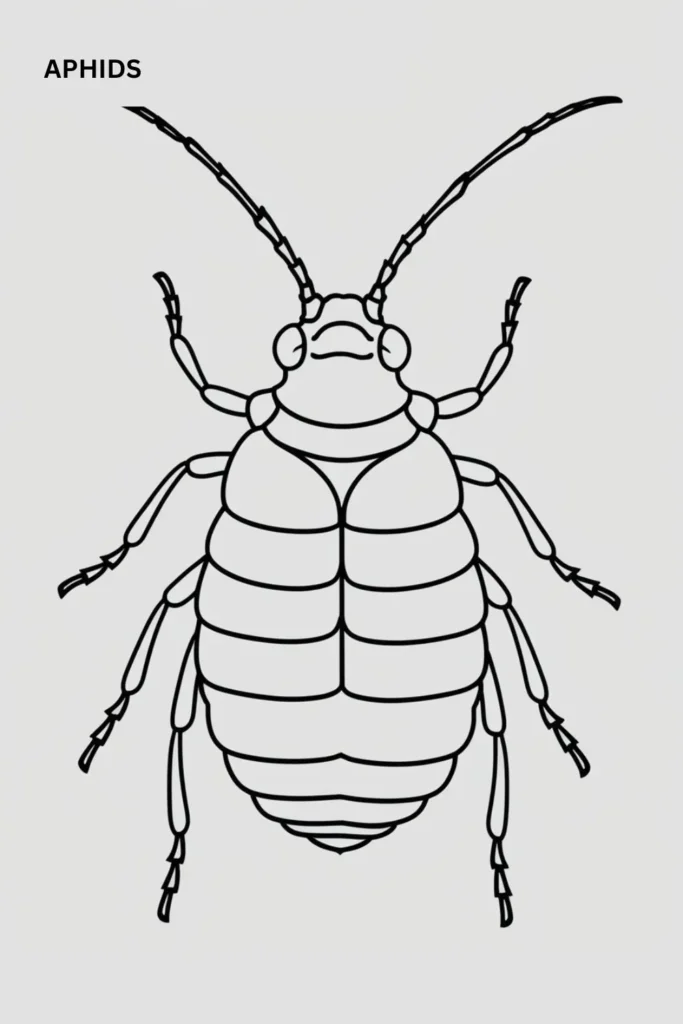
Aphids are small, sap-sucking insects that weaken plants and can transmit diseases. They typically form clusters on the undersides of leaves and stems.
Control Methods:
- Beneficial Insects: Introduce natural predators like ladybugs or lacewings, which feed on aphids and help control their population naturally.
- Organic Insecticides: Apply organic insecticides such as neem oil or insecticidal soap to target aphids. Consistent application ensures thorough coverage and effectiveness.
Fungus Gnats
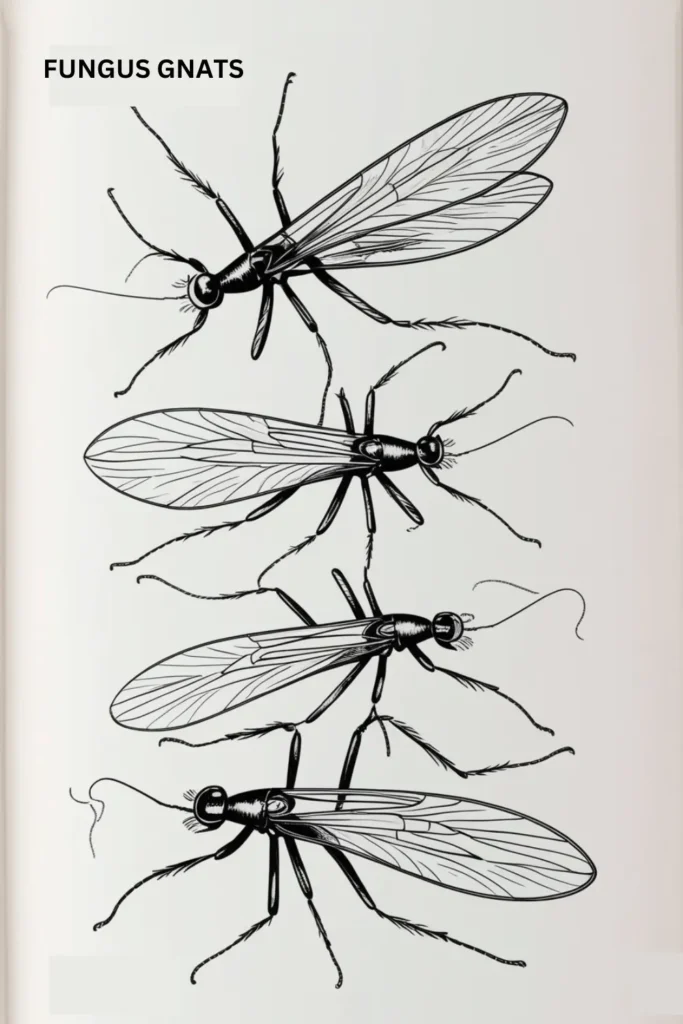
Fungus gnats are small, dark flies whose larvae feed on plant roots, potentially causing poor growth and root damage. They are commonly seen flying around the base of plants.
Control Methods:
- Sticky Traps: Place yellow sticky traps near the plants to capture adult gnats and reduce their numbers.
- Beneficial Nematodes: Apply beneficial nematodes to the growing medium. These microscopic organisms prey on fungus gnat larvae, offering a natural solution to control infestations.
Preventing and Managing Cannabis Diseases
In addition to managing pests, preventing and controlling diseases is crucial for maintaining healthy cannabis plants in a Deep Water Culture (DWC) system. Here are some common diseases and their prevention methods:
Root Rot
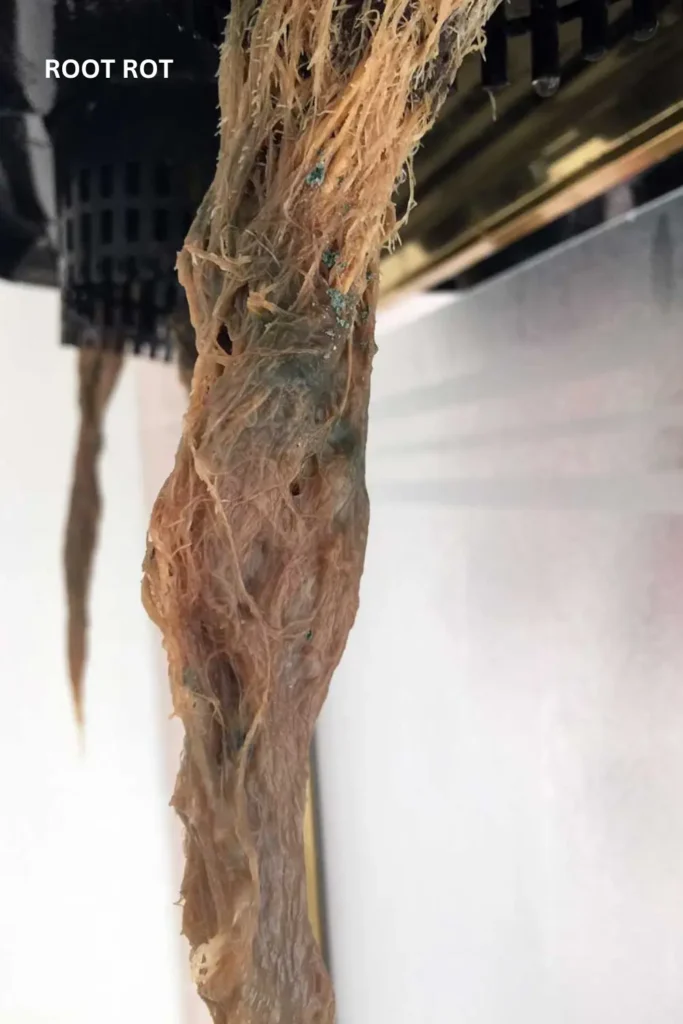
Root rot is a serious condition caused by pathogens such as Pythium. It often results from poor oxygenation and high water temperatures, leading to brown, slimy roots and stunted plant growth.
Prevention Methods:
- Water Temperature: Keep the water temperature between 65-75°F (18-24°C) to inhibit the growth of root rot pathogens.
- Oxygenation: Ensure adequate oxygenation of the nutrient solution by using air pumps and air stones, which help keep roots healthy and prevent stagnation.
- Beneficial Bacteria: Introduce beneficial bacteria or enzymes into the nutrient solution to support healthy root development and combat root rot.
Powdery Mildew
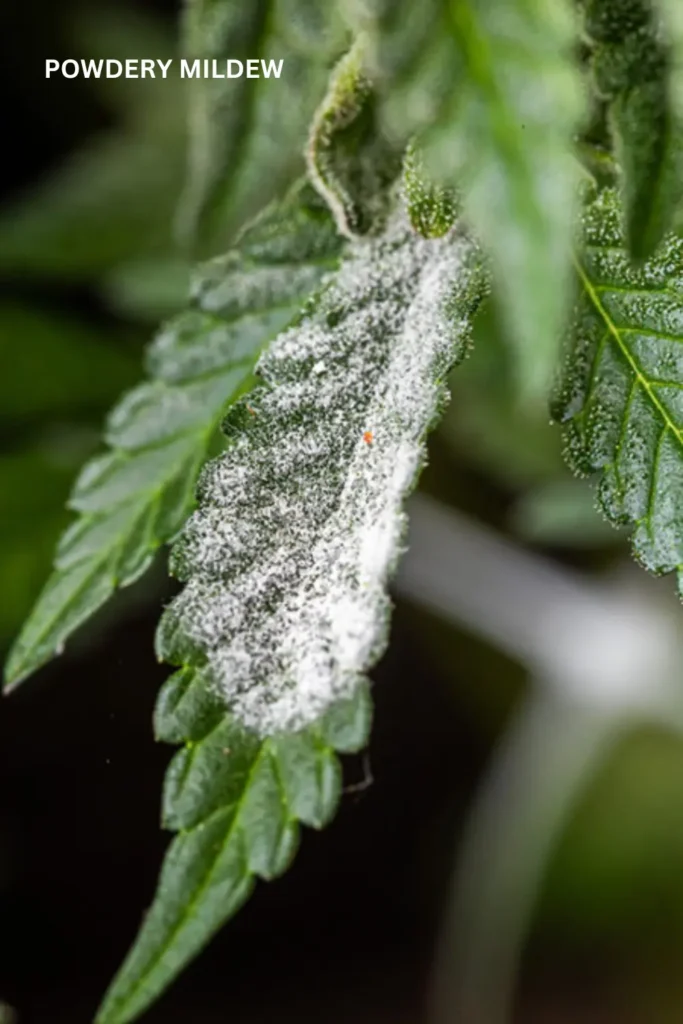
Powdery mildew is a fungal infection that manifests as a white, powdery film on leaves and stems. It prospers in environments with high humidity and poor air circulation.
Prevention Methods:
- Humidity Control: Maintain optimal humidity levels—40-60% during the vegetative stage and 40-50% during flowering—to reduce the risk of powdery mildew.
- Air Circulation: Enhance air circulation around the plants with oscillating fans, which helps lower humidity levels and prevents fungal growth.
- Fungicides: At the first sign of powdery mildew, apply organic fungicides or sulfur-based sprays to control its spread and protect your plants.
Botrytis (Bud Rot)
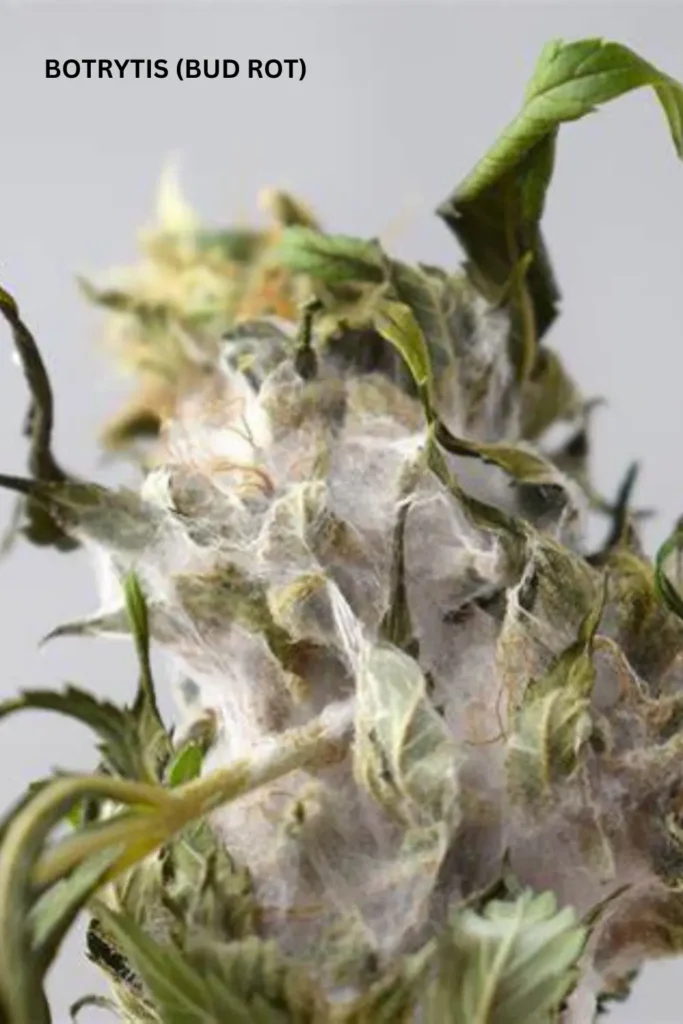
Botrytis, or bud rot, is a fungal disease affecting cannabis buds. It starts from within the bud, causing it to become gray and mushy as the infection spreads outward.
Prevention Methods:
- Humidity and Airflow: Keep humidity low during the flowering stage and ensure excellent air circulation to prevent moisture buildup in dense buds.
- Pruning: Regularly prune excess foliage to improve airflow around the plants and reduce the risk of bud rot. Immediately remove any infected buds to prevent the disease from spreading.
- Preventive Sprays: Use fungicidal sprays specifically designed to control botrytis, particularly in high-humidity environments.
Regular monitoring, preventive measures, and prompt intervention are essential for keeping diseases at bay and maintaining a thriving growth environment.
Harvesting and Curing Your Cannabis
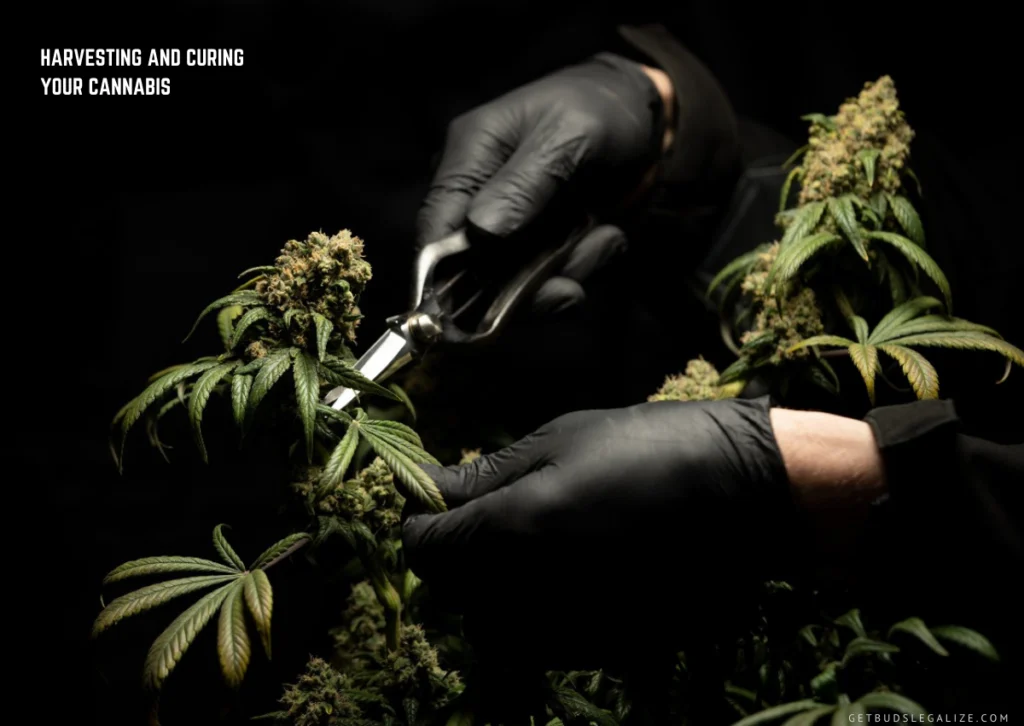
Harvesting and curing cannabis properly is crucial to ensure you get the best quality product. Follow these guidelines to achieve optimal results:
When to Harvest Cannabis Plants
The ideal time to harvest cannabis is when the majority of trichomes on the buds are milky white, with some turning amber. This color change indicates peak potency. Use a magnifying glass or a microscope to closely inspect the trichomes and determine the best time for harvest.
Harvesting Process:
- Cutting: Begin by cutting the plants at the base. Remove large fan leaves to make the trimming process easier.
- Drying: Hang the plants upside down in a dark room with good ventilation. Aim for a humidity level of 50-60% and a temperature between 60-70°F (15-21°C). Allow the plants to dry for 7-10 days until the stems snap easily when bent.
- Trimming: After drying, trim the buds to remove any remaining leaves. This step prepares the buds for the curing process and ensures a cleaner, more enjoyable final product.
Curing:
- Jar Curing: Transfer the dried buds into airtight glass jars. For the first week, open the jars daily to allow any remaining moisture to escape. Gradually reduce the frequency of jar openings over the following weeks.
- Curing Duration: Cure the buds for at least 2-4 weeks. Proper curing enhances the flavor and potency of your cannabis, resulting in a smoother smoke and better taste.
Troubleshooting Common DWC Issues
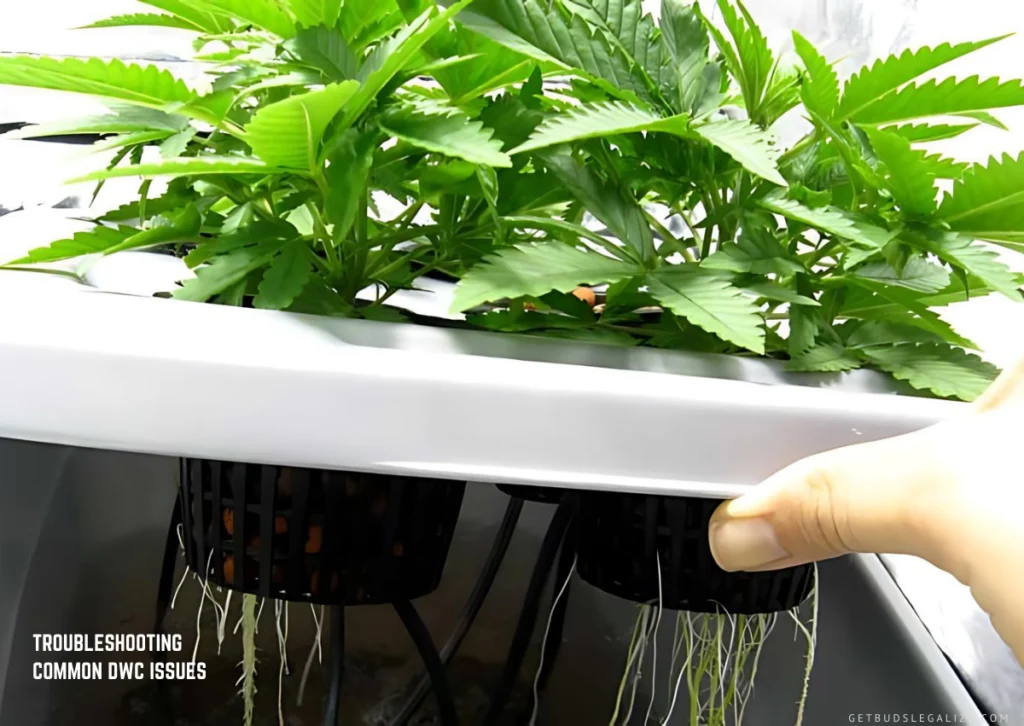
Managing a Deep Water Culture (DWC) system involves addressing several common issues that can affect plant health and growth. Here’s how to resolve some of the most prevalent issues:
1. Managing pH Fluctuations
A stable pH is crucial for efficient nutrient uptake in a DWC system. Fluctuations can lead to nutrient lockout, where plants are unable to absorb essential nutrients properly.
Solution:
- Regular Monitoring: Check the pH of the nutrient solution daily using a reliable pH meter. Consistent monitoring helps catch any deviations early.
- Adjustments: Use pH up or pH down solutions to keep the pH within the ideal range of 5.5 to 6.5. Regular adjustments help maintain nutrient availability.
- Water Source: Frequent pH fluctuations may indicate issues with your water source. Using distilled or reverse osmosis water can help provide a more stable base for your nutrient solution.
- Nutrient Mix: Ensure you are mixing nutrients correctly. Improperly mixed nutrients can cause pH instability. Always follow the manufacturer’s instructions for the correct ratios.
2. Addressing Root Problems
Healthy roots are essential for robust plant growth. Root issues, such as rot or discoloration, can severely impact overall plant health.
Solution:
- Regular Checks: Inspect roots frequently for signs of health issues. Healthy roots should be white or light tan and free from slimy or brown discoloration.
- Temperature Control: Maintain water temperatures between 65-75°F (18-24°C) to prevent conditions conducive to root rot.
- Oxygenation: Ensure proper oxygenation of the nutrient solution using air stones and an air pump. Adequate oxygen levels prevent anaerobic conditions that can lead to root rot.
- Beneficial Bacteria: Add beneficial bacteria or enzyme products to the nutrient solution. These products help break down dead organic material and promote a healthy root environment.
3. Dealing with Slow Growth
Slow growth in cannabis plants can be caused by inadequate nutrients, insufficient light, or suboptimal environmental conditions.
Solution:
- Nutrient Levels: Confirm that nutrient levels are appropriate for the plant’s growth stage. Regularly check the EC (electrical conductivity) to ensure that nutrient concentration is within the ideal range of 1.0 to 2.0 EC.
- Light Intensity: Verify that grow lights are providing sufficient intensity and are positioned at the correct distance from the plants. During the vegetative stage, plants require higher light intensity compared to the flowering stage.
- Environmental Conditions: Maintain optimal temperature and humidity levels. Ideal temperatures are between 70-85°F (21-29°C) during the day and slightly cooler at night. Humidity should be around 40-60% during vegetative growth and 40-50% during flowering.
- Air Circulation: Ensure good air circulation within the growing area to prevent stagnant air and encourage healthy plant growth.
Conclusion: The Rewards of Growing Cannabis with DWC Systems
Growing cannabis using a Deep Water Culture (DWC) system can be exceptionally rewarding, providing faster growth rates and higher yields compared to traditional soil methods.
Whether you’re a beginner or a seasoned grower, DWC offers a dynamic and efficient approach to achieving outstanding results in cannabis cultivation. Embrace the journey, keep learning, and take pride in producing top-quality cannabis from your hydroponic setup.
FAQs About Growing Cannabis in a DWC System
An RDWC system is a hydroponic growing method where cannabis plants have their roots submerged in a nutrient-rich, oxygenated water solution. This setup provides plants with direct access to nutrients and oxygen, promoting rapid growth and high yields.
Recirculating DWC systems offer several benefits, including faster growth rates, higher yields, reduced risk of soil-borne pests and diseases, and precise control over nutrient levels. These advantages make DWC an attractive option for both novice and experienced cannabis growers.
Key components of a DWC system kit include:
- A reservoir to hold the nutrient solution
- Net pots to support the plants
- An air stone and air pump to provide oxygen to the water
- Hydroponic nutrients
- A growing medium (e.g., clay pebbles, rock wool)
- pH and EC meters to monitor the solution
Deep Water Culture (DWC) system setup:
- Choose an opaque reservoir to prevent algae growth.
- Install air stones at the bottom and connect them to the air pump.
- Fill net pots with growing medium and place the cannabis seedlings or clones in them.
- Following the manufacturer’s instructions, prepare the nutrient solution, then fill the reservoir.
- Place the net pots in the reservoir lid, ensuring the roots can reach the nutrient solution.
- Regularly monitor and adjust pH and EC levels, and ensure continuous oxygenation.
Maintain the pH level between 5.5 and 6.5 and the electrical conductivity (EC) level between 1.0 and 2.0. Regularly check and adjust these levels to ensure optimal nutrient uptake and plant health.
Strains that thrive in Deep Water Culture (DWC) systems include:
- White Widow
- Northern Lights
- Blue Dream
- Green Crack
These strains are known for their vigorous growth, high yields, and adaptability to hydroponic systems.
Use hydroponic nutrients formulated for cannabis. Begin with a lower concentration and increase gradually as the plants develop. Regularly check and adjust the pH and EC levels to avoid deficiencies and prevent nutrient burn.
Change the nutrient solution every 1-2 weeks to maintain optimal nutrient levels and prevent the buildup of harmful salts and contaminants. Top off the reservoir with fresh water and nutrients as needed between changes.
Identify the specific deficiency or excess based on symptoms (e.g., yellowing leaves for nitrogen deficiency, burnt leaf tips for nutrient burn). Adjust the nutrient solution accordingly, and flush the system with clean water if necessary to correct imbalances.
Prevent root rot by maintaining a water temperature between 65-75°F (18-24°C), ensuring proper oxygenation with an air pump and air stones, and using beneficial bacteria and enzymes to promote root health.
Use net pots filled with a stable growing medium like clay pebbles or rock wool. These provide support while allowing roots to grow into the nutrient solution. If additional support is needed, use stakes or trellises.
- Keep water temperature between 65-75°F (18-24°C).
- Maintain ambient temperature between 70-85°F (21-29°C) during the day and slightly cooler at night.
- Control humidity levels, keeping it around 40-60% during vegetative growth and 40-50% during flowering.
Opt for high-intensity discharge (HID) or LED grow lights. In the vegetative stage, use a light cycle of 18 hours on and 6 hours off. For the flowering stage, switch to a 12/12 light cycle (12 hours on, 12 hours off).
Regularly inspect plants for pests like spider mites, aphids, and fungus gnats. Use organic insecticides, beneficial insects, or neem oil to control infestations. Prevent diseases by maintaining optimal environmental conditions and practicing good hygiene.
Harvest when the majority of trichomes on the buds are milky white with some turning amber. This indicates peak potency. Use a magnifying glass or microscope to inspect trichomes and determine the ideal harvest time.
- Drying: Hang plants upside down in a dark, well-ventilated room with 50-60% humidity and 60-70°F (15-21°C) temperature for 7-10 days.
- Trimming: Trim buds to remove leaves and prepare them for curing.
- Curing: Place dried buds in airtight glass jars, opening them daily for the first week to release moisture, then less frequently over the next few weeks. Cure for 2-4 weeks to enhance flavor and potency.
- pH Fluctuations: Regularly check and adjust pH using pH up/down solutions.
- Root Problems: Inspect roots for signs of rot or discoloration and ensure proper oxygenation.
- Slow Growth: Check nutrient levels, light intensity, and environmental conditions, and adjust as necessary.
Tap water can be used if it is filtered to remove chlorine and other contaminants. Alternatively, use distilled or reverse osmosis (RO) water to ensure purity and prevent potential issues.
Prevent algae growth by using an opaque reservoir to block light, maintain cleanliness, and keep the nutrient solution oxygenated. Regularly check for algae and clean the system as needed.
Yes, this system can be suitable for beginners who are willing to learn and maintain their setup. While it requires attention to detail, the benefits of faster growth and higher yields make it a rewarding choice for novice growers.
The cost of setting up a Deep Water Culture (DWC) system can vary widely based on the system’s size, the components’ quality, and the operation’s scale. Here’s a general breakdown of potential costs:
Basic DWC System Costs:
1. Reservoir:
- Small (1-5 plants): $20 – $50 (e.g., plastic buckets or small totes)
- Medium (6-10 plants): $50 – $100 (e.g., larger plastic totes or specialized reservoirs)
- Large (10+ plants): $100 – $300 (e.g., commercial-grade reservoirs)
2. Net Pots:
- Cost: $10 – $30 for a pack of 10-20 pots
3. Air Pump and Air Stones:
- Air Pump: $20 – $60 (depending on capacity and quality)
- Air Stones: $5 – $20 (usually sold in packs)
4. Hydroponic Nutrients:
- Basic Nutrient Kit: $30 – $80 (includes essential nutrients for a few weeks to a few months)
5. Growing Medium:
- Clay Pebbles or Rock Wool: $10 – $30 (depends on quantity and brand)
6. pH and EC Meters:
- pH Meter: $20 – $50
- EC Meter: $20 – $50 (often available in combo kits)
Total Estimated Cost:
- Small Scale (1-5 plants): $100 – $250
- Medium Scale (6-10 plants): $250 – $500
- Large Scale (10+ plants): $500 – $1,000+
Additional Costs to Consider:
- pH and EC Calibration Solutions: $10 – $30 (for maintaining accuracy of meters)
- Chillers (if needed for temperature control): $100 – $300
- Water Pumps (if required for circulation): $20 – $60
The initial setup cost can be relatively high, but a DWC system often leads to faster growth and potentially higher yields, which can offset the initial investment over time.
ILGM Fertilizer
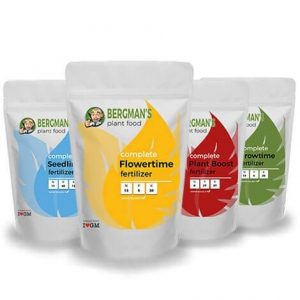
- From seedling to harvest, give your plants everything they need.
- Enough for feeding at least 5 plants.
- Discounted Package Deal
- Works well in soil, hydroponics, and other growing mediums.
- The best way to treat your plants
ILGM Plant Protector
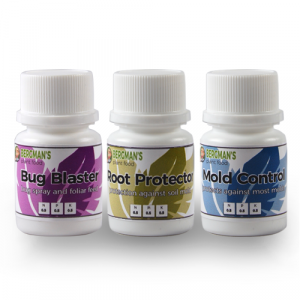
- Protect your cannabis from diseases and harmful pests.
- Contains three 20 ml bottles.
- Enough supplies to protect 20 plants.
- It can be used in soil, hydroponic, and all other growing mediums.























